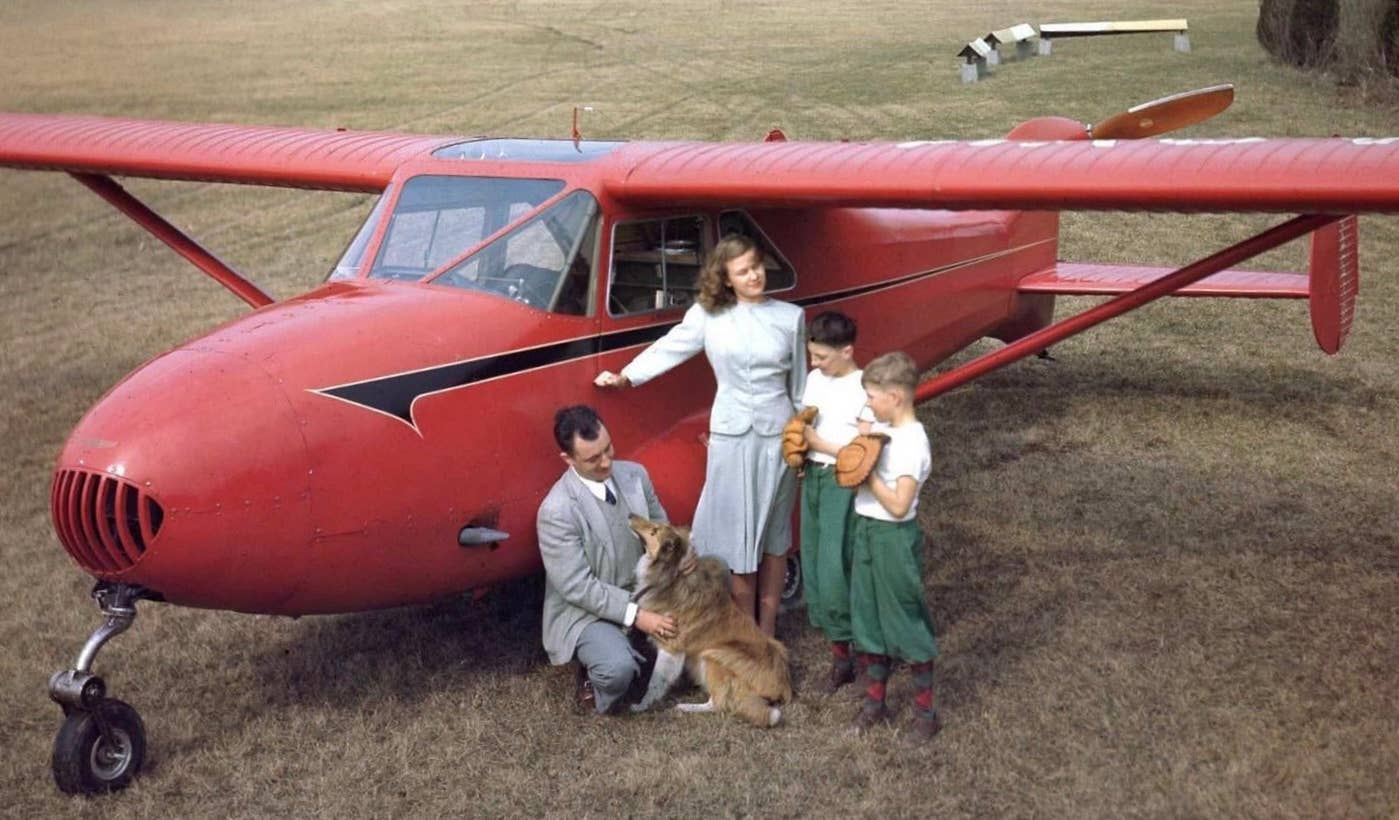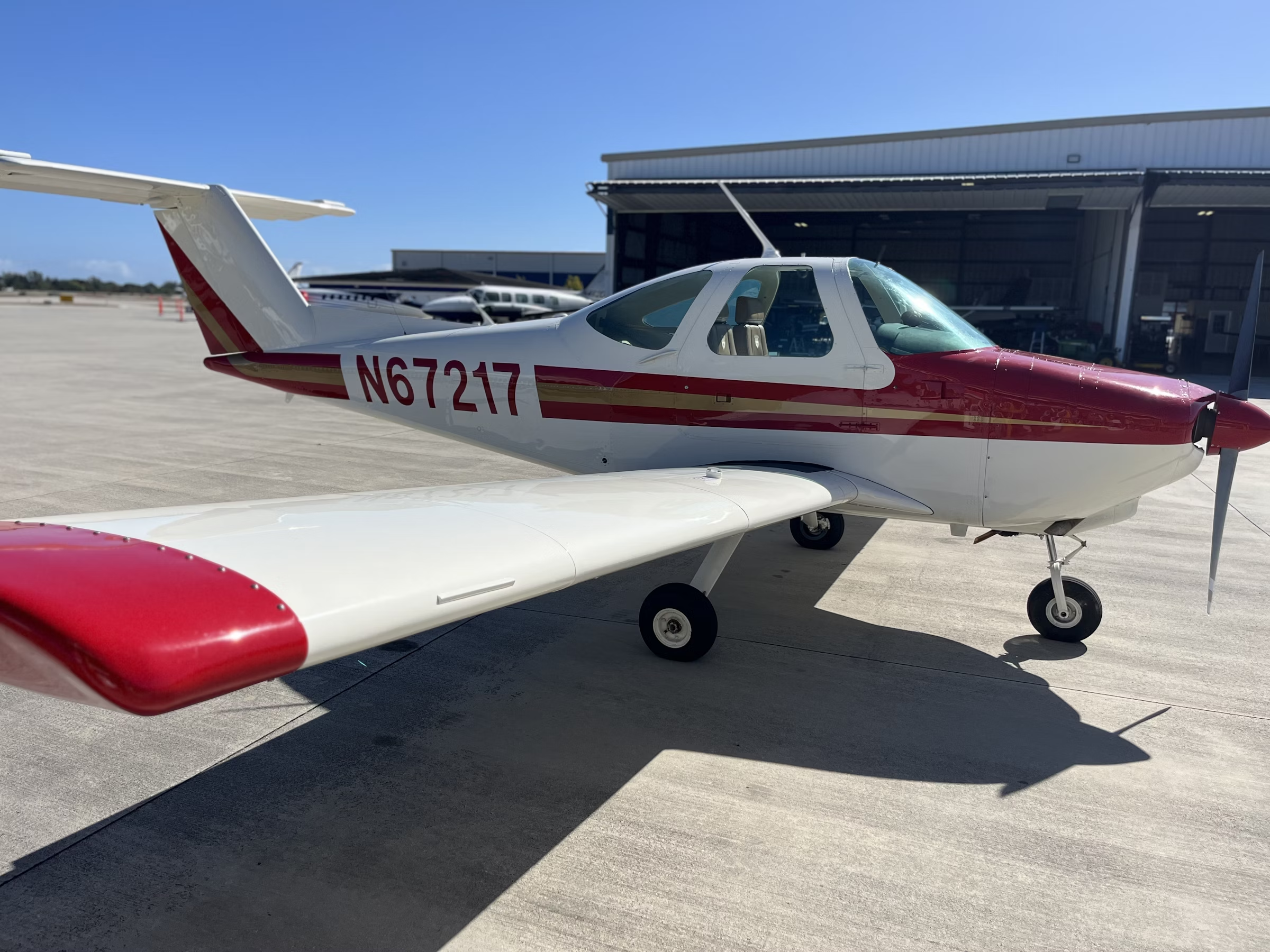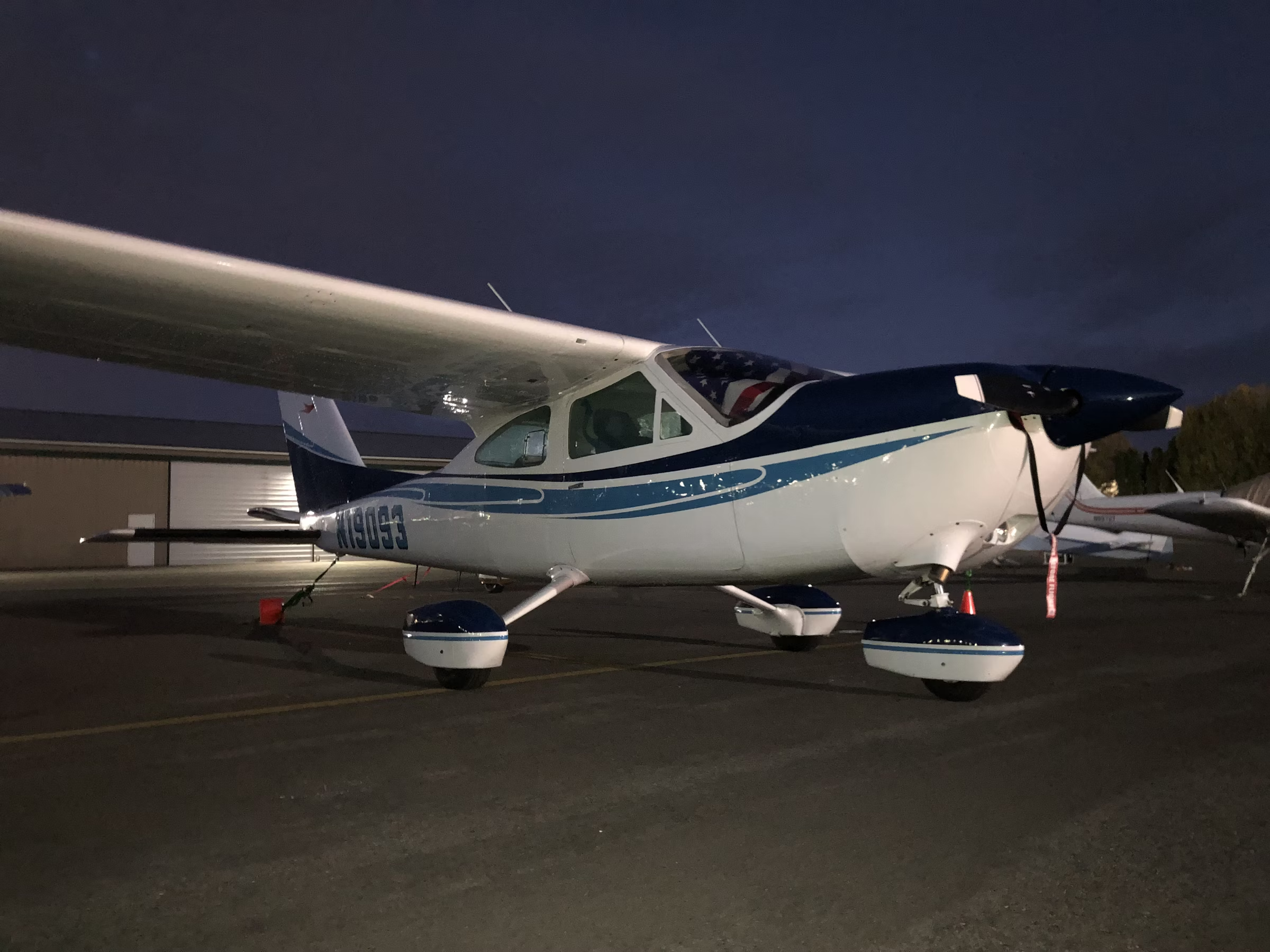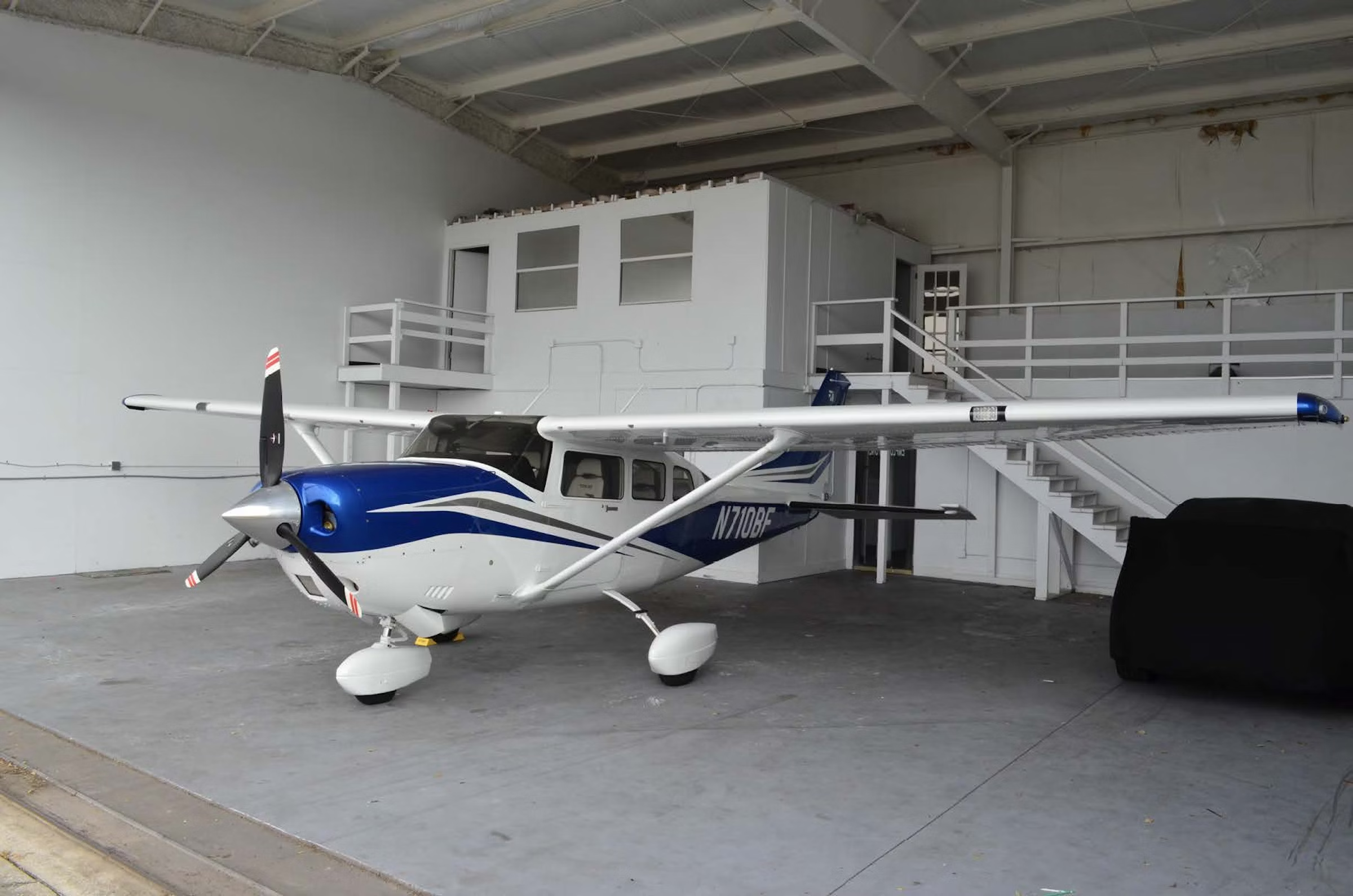That Time When WACO Designers Went a Little Crazy
The WACO Aristocraft was a single-engine, four-place aircraft targeting the scores of pilots returning from World War II.

A WACO marketing photo presents the unique Aristocraft as a personal airplane for the family. Note the large, fully reversible wooden pusher propeller. [Courtesy: WACO]
To most people, the name WACO is synonymous with elegant biplanes from the golden era of aviation. While the company did stray from convention and build a single monoplane in 1940 to compete for a military contract, the traditional WACO is a classic, open-cockpit biplane that is happiest cruising low and slow above fragrant hayfields on calm summer evenings.
In 1947, however, WACO’s designers and engineers went a little crazy.
Like so many other manufacturers of the era, the company became motivated to introduce a new “personal aircraft,” targeting the scores of pilots returning from World War II. This customer base, with a unique blend of pilot qualifications and disposable income, tantalized the marketing departments of aircraft manufacturers across the country.
To stand out from the rest, WACO designed a four-place aircraft with a front-mounted single engine that drove a pusher propeller in the tail and named it the Aristocraft.
Predictably, the company touted a long list of performance advantages.
It claimed that the unique engine/propeller arrangement reduced drag, minimized propeller noise in the cabin, and eliminated the variation between power-on and power-off flight characteristics. It also promoted the ability to load and unload the airplane with the engine running without having to fight propwash, as well as the increased safety margin with the propeller positioned at the extreme aft end of the aircraft.
The airframe construction was traditional, with a metal wing, tail, and control surfaces, and a fabric-covered tubular steel fuselage. WACO subcontracted the still-novel tricycle landing gear to Firestone. It was partially retractable, sacrificing aerodynamic efficiency for utility—should the pilot land with the gear retracted, the airplane would still roll on the wheels, limiting damage to the airframe.
More notable was the powertrain. WACO utilized a 215 hp, 6-cylinder Franklin engine linked to the aft controllable-pitch, reversible propeller through a long driveshaft that extended through a shroud in the cabin. The driveshaft incorporated multiple constant-velocity universal joints with individual pressure-lubricated housings.
Because there was no propeller in the nose to provide cooling air over the engine on the ground, a blower attachment was used to do so.
Naturally, all of these design alterations added weight and complexity, resulting in an empty weight of 2,046 pounds—several hundred pounds heavier than the 1,600- to 1,800-pound range of similarly powered types like the 182, Debonair, and Comanche. Claimed performance wasn’t terrible, however, with a cruise speed of 135 mph at 5,000 feet, a 960 fpm rate of climb, and a 17,500-foot service ceiling. Maximum gross weight was listed as 3,130 pounds, which, when accounting for the 60 gallons of fuel capacity, returns a payload of 724 pounds.
WACO reportedly secured some 300 orders for the Aristocraft, but no production aircraft ever materialized.
Details are scarce, and some sources mention WACO’s inability to cope with a shrinking market. But, considering how unsuccessful other manufacturers were when faced with managing the vibration inherent in similar aircraft designs incorporating long driveshafts, it’s likely the company encountered the same problem, and it shelved the program entirely.
In the early 1960s, the Aristocraft was briefly resurrected, albeit in a different form.
Homebuilder Terry O’Neill converted it into a simpler version that utilized a traditional propeller arrangement for the front engine, intending to market it in two varieties—one certificated and another experimental. Despite flying the redesigned version, his plans progressed no further, and the Aristocraft story came to an end.

Sign-up for newsletters & special offers!
Get the latest FLYING stories & special offers delivered directly to your inbox






